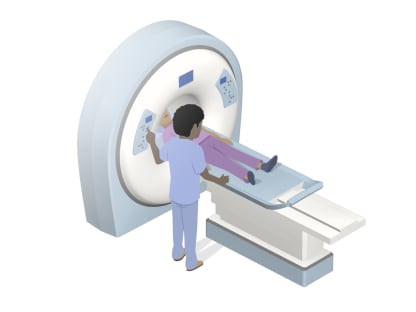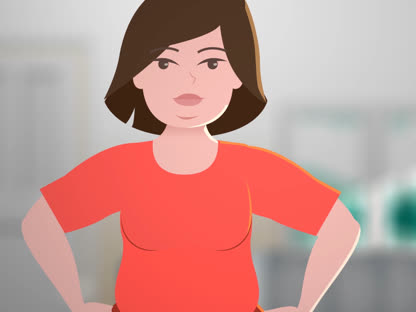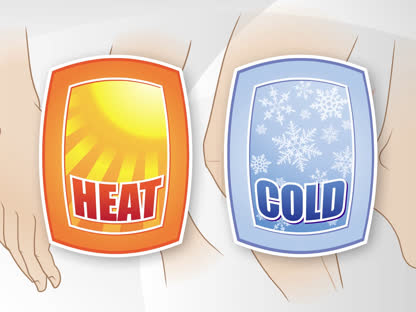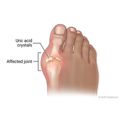Gout
Make an Appointment
Our team is here to help you make an appointment with the specialists that you need.
Gout
Condition Basics
What is gout?
Gout is a kind of arthritis. It can cause an attack of sudden burning pain, stiffness, and swelling in a joint, usually a big toe. These attacks can happen over and over unless gout is treated. Over time, they can harm your joints, tendons, and other tissues. Gout is most common in men.
What causes it?
Gout is caused by too much uric acid in the blood. Usually, having too much uric acid isn't harmful. Many people with high levels in their blood never get gout. But sometimes when these levels in your blood are too high, the uric acid forms hard crystals in your joints.
What are the symptoms?
The most common sign of gout is a nighttime attack of swelling, tenderness, redness, and intense pain in a joint, usually your big toe joint. It may get worse quickly and last for hours, a few days, or even weeks. Gout can affect how much you can move the affected the joint.
How is it diagnosed?
To diagnose gout, your doctor may take a sample of fluid from your joint to look for uric acid crystals. This is the best way to test for gout. Your doctor may also do a blood test to measure the amount of uric acid in your blood and do imaging tests, such as ultrasound.
How is gout treated?
Medicines can help treat gout. To stop a gout attack, your doctor will prescribe pills such as colchicine or NSAIDs (such as naproxen). Sometimes it's treated with a steroid shot. The sooner you get started on medicines, the sooner your symptoms will start to get better.
Resting the joint that hurts can also help you feel better. Taking ibuprofen or another anti-inflammatory medicine can help too. Using ice on the sore joint may also help.
To manage long-term gout and prevent future attacks, your doctor can prescribe a medicine to reduce uric acid buildup in your blood. For the first few months you will probably take another medicine with it to prevent attacks until the long-term medicine has time to work.
Health Tools
Health Tools help you make wise health decisions or take action to improve your health.
Cause
Gout is caused by too much uric acid in the blood (hyperuricemia). Most of the time, having too much uric acid isn't harmful. Many people with high levels in their blood never get gout. But sometimes when these levels in your blood are too high, the uric acid forms hard crystals in your joints. This causes pain and other symptoms.
In some cases, the exact cause isn't known. But inherited factors (genes) seem to play a role.
Gout can seem to flare up without specific cause. Or it can be brought on by:
- Being overweight, drinking too much alcohol, eating or drinking things made with high-fructose corn syrup, or eating seafood or red meat.
- Medicines, such as diuretics.
- Major illness or certain medical conditions, such as rapid weight loss or high blood pressure.
- Surgery.
- Having been born with a rare condition that causes high blood uric acid levels.
Symptoms
Symptoms of gout include:
- Warmth, pain, swelling, and extreme tenderness in a joint, usually a big toe joint. The pain often starts during the night. It may get worse quickly, last for hours, and be so intense that even light pressure from a bedsheet is intolerable.
- Very red or purplish skin around the affected joint. The joint may look infected.
- Limited movement in the affected joint.
- Peeling and itching of the skin around the affected joint as the gout gets better.
Gout can also affect the joints of the feet, ankles, knees, wrists, fingers, and elbows.
Gout attacks can last a few days or many weeks before the pain goes away.
What Happens
Gout most often occurs after a number of years of buildup of uric acid crystals in the joints and tissues. A gout attack usually starts during the night with moderate pain that grows worse. Symptoms usually occur in a single joint, most often the big toe. Then symptoms go away over time.
Most gout attacks stop after about a week. But severe attacks may last up to several weeks, with soreness lasting for up to 1 month. Many people have a second attack of gout within 6 months to 2 years after their first attack. But there may be many years between attacks. If gout is untreated, the frequency of attacks usually increases with time.
When to Call a Doctor
Call or see your doctor now if you have:
- Severe pain in a single joint that comes on very quickly.
- Swollen, tender joints with warm, red skin over them.
It's important to see your doctor even if the pain from gout has stopped. The uric acid buildup that caused your gout attack may still be irritating your joints. It could cause serious damage over time. Your doctor can prescribe medicines that can prevent and even reverse the uric acid buildup.
Exams and Tests
To diagnose gout, your doctor may do:
- A joint fluid analysis to look for uric acid crystals. This is the only certain way to diagnose gout.
- A medical history and physical exam.
- A test to measure levels of uric acid in blood.
- A test to measure levels of uric acid in urine.
- Imaging tests, like ultrasound and computed tomography.
While X-rays of feet and hands are sometimes useful in the late stages of gout, X-rays aren't usually helpful in the early diagnosis. Pain often causes people to seek medical care before any long-term changes can be seen on an X-ray. But X-rays may help to rule out other causes of arthritis.
Learn more
Watch
Treatment Overview
The goals of treatment for gout are fast pain relief and preventing future gout attacks and long-term problems. These include joint destruction and kidney damage.
Specific treatment depends on whether you are having an acute attack or are trying to manage long-term gout and prevent future attacks.
To treat an acute attack
To stop a gout attack, your doctor will give you medicines. These are usually pills like colchicine, NSAIDs (such as naproxen), or a steroid medicine. Sometimes it's treated with a steroid shot. The sooner you get started on medicines, the sooner your symptoms will start to get better.
To ease the pain during a gout attack, rest the joint that hurts. Taking ibuprofen or another anti-inflammatory medicine can also help you feel better. Using ice on the sore joint may also help.
To manage long-term gout
Gout symptoms can come and go for several years. And they may affect more than one joint.
To manage long-term gout and prevent future attacks, your doctor can prescribe a medicine like a xanthine oxidase inhibitor (such as allopurinol) to reduce uric acid buildup in your blood.
The medicine may also reduce tophi if you have them. Tophi are chalky nodules that form from uric acid crystals. They may first appear as nodules on the hands, elbows, or ears. In rare cases, surgery may be done to remove large tophi that are causing deformity.
While you are starting long-term medicine, your doctor will probably also prescribe colchicine or NSAIDs for the first several months. This helps prevent attacks until the long-term medicine has time to work.
Learn more
Self-Care
- If the joint is swollen, put ice or a cold pack on the area for 10 to 20 minutes at a time. Put a thin cloth between the ice and your skin.
- Prop up the sore limb on a pillow when you ice it or anytime you sit or lie down during the next 3 days. Try to keep it above the level of your heart. This can help reduce swelling.
- Rest sore joints. Avoid activities that put weight or strain on the joints for a few days. Take short rest breaks from your regular activities during the day.
- Take your medicines exactly as prescribed. Call your doctor if you think you are having a problem with your medicine.
- Take pain medicines exactly as directed.
- If the doctor gave you a prescription medicine for pain, take it as prescribed.
- If you are not taking a prescription pain medicine, ask your doctor if you can take an over-the-counter medicine.
- Eat less seafood and red meat.
- Avoid foods or drinks that are made with high-fructose corn syrup.
- Check with your doctor before drinking alcohol.
- Losing weight, if you are overweight, may help reduce attacks of gout. But do not go on a diet that causes rapid weight loss. Losing a lot of weight in a short amount of time can cause a gout attack.
Learn more
Watch
Medicines
Medicines are used to treat gout attacks and to reduce uric acid in the blood.
Both short-term and long-term medicines may be used.
- Short-term medicines.
These relieve pain and reduce inflammation during an acute attack or prevent acute attacks from coming back.
They may include:
- NSAIDs.
- Colchicine.
- Corticosteroids.
- Long-term medicines.
Medicines, such as allopurinol, lower uric acid levels in the blood. This can reduce how often you have gout attacks and how bad they are.
If your doctor prescribes medicine to lower uric acid levels, take it as directed. Most people will continue to take this medicine every day. Make sure you know how to take it.
- If you're taking one of these medicines, keep taking it during the attack.
- If you have one of these medicines but have not been taking it, don't start taking it during the attack. It could make the attack worse. Ask your doctor before you take it.
Learn more
Credits
Current as of: July 31, 2024
Author: Ignite Healthwise, LLC Staff
Clinical Review Board
All Healthwise education is reviewed by a team that includes physicians, nurses, advanced practitioners, registered dieticians, and other healthcare professionals.
Current as of: July 31, 2024
Author: Ignite Healthwise, LLC Staff
Clinical Review Board
All Healthwise education is reviewed by a team that includes physicians, nurses, advanced practitioners, registered dieticians, and other healthcare professionals.
This information does not replace the advice of a doctor. Ignite Healthwise, LLC, disclaims any warranty or liability for your use of this information. Your use of this information means that you agree to the Terms of Use. Learn how we develop our content.
To learn more about Ignite Healthwise, LLC, visit webmdignite.com.
© 2024-2025 Ignite Healthwise, LLC.
This information does not replace the advice of a doctor. Ignite Healthwise, LLC, disclaims any warranty or liability for your use of this information. Your use of this information means that you agree to the Terms of Use. Learn how we develop our content.






